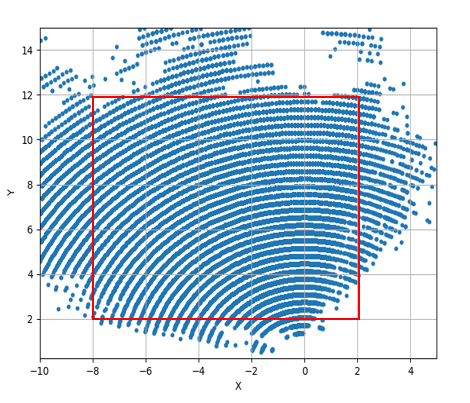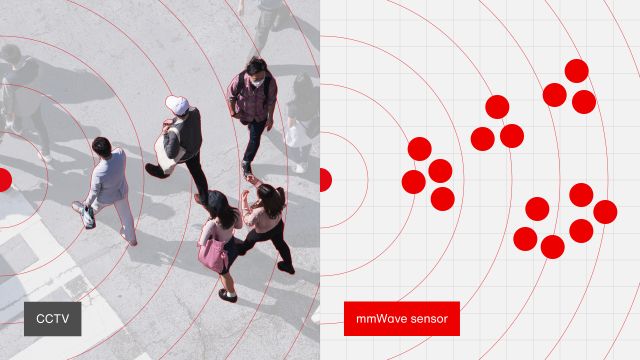mmWave Results
We have relaunched the mmWave pilot at Marineterrein to better understand the technology and its application for monitoring crowds in the urban infrastructure. Our Researcher Girish will share his first results.

We have relaunched the mmWave pilot at Marineterrein to better understand the technology and its application for monitoring crowds in the urban infrastructure. To recollect, millimeter wave (mmWave) is a radar-based technology that detects people as a cluster of points known as point clouds. Thus,practically speaking, no personal information is captured making the method inherently privacy-friendly. Privacy-friendly sensing is favored by people and choosing the least invasive sensing method is required by GDPR
What we did
We have deployed the mmWave radar together with a camera looking into the street next to AMS. We tuned the radar configuration to cover the entire 12 m width of the road. Our measurements show that the radar could sense objects over an area of 100 sqm.

According to the scientific literature, one of the primary challenges related to mmWave based people counting is the disaggregation of people when they walk together. The people appear as a single cluster of points making it difficult to estimate the count. To specifically address this problem, we have developed a neural network based algorithm. The algorithm has been trained with extensive data from volunteers who walked across the radar in different group sizes and varying formations.
Results from our deployment

Our deployment has provided us with important insights about the performance of mmWave radar under real traffic conditions.

This figure plots the confusion matrix that conveys how good the system is in determining the number of people in a group. We observe that mmWave can accurately estimate the count of people in a group with 83% accuracy. Furthermore, even in case of misclassification, generally, the group size estimation is off by a count of one. In other words, if a cluster of three people gets misclassified, there is a high chance that it is counted as a cluster of either two people or four people. Our results also suggest that as we aggregate the count longer, the error tends to cancel out (sometimes it slightly overcounts, sometimes it slightly undercounts). The figure above plots the confusion matrix for presence detection – Checking if the area is vacant or someone is present. We have observed that the accuracy in case of presence detection is better than 96%. Moreover, the mmWave detection accuracy is independent of the variations in the lighting conditions, thus performing better than the camera-based systems during low-lit durations.
We expect that it is possible to improve on the accuracy results by improving on the counting method by averaging sensing readouts over time.
Conclusion
Our deployment shows that the mmWave system can not only be more privacy friendly but also accurate enough to meet the requirements for people counting in urban landscape. We believe that the technology holds promise and must be considered for deployment. We call upon the urban policy makers and the technology enthusiasts to partner with us for the further development and deployment of mmWave sensing. Please contact Girish Vaidya.
Read more about mmWave sensing
'Privacy preserving crowd sensing systems' by Girish Vaidya researcher at TU Delft and AMS Institute (URL)
Would you like to learn more about crowd sensing systems that preserve privacy? Why mmWave radar, being a non-camera based technology, offers better privacy and is more likely to be perceived as a privacy friendly alternative by the general public? Read this article.



